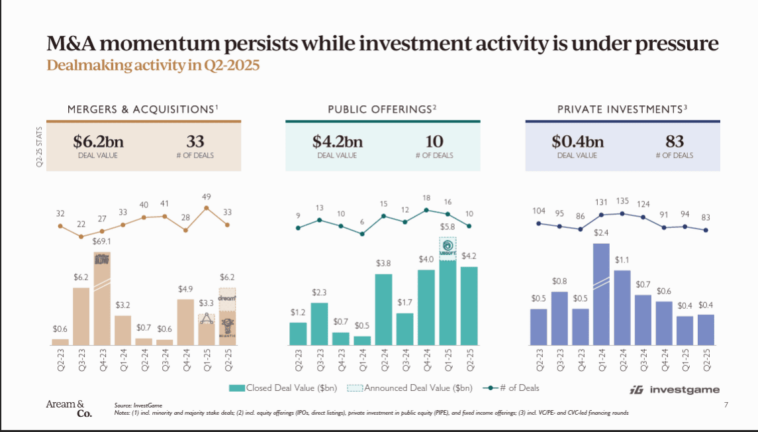The global mobile gaming sector continues to prove its resilience and strategic importance in the wider games market, with fresh figures showing robust dealmaking and steady consumer spending.
According to Aream & Co.’s latest report, mobile gaming led transaction volumes in the first half of 2025, contributing significantly to the industry’s $6.2 billion total M&A value in Q2 alone. Year to date, the sector has recorded 82 deals worth a combined $9.5 billion—a 144% increase over the same period last year and the highest half-year figure since the pandemic boom.
Notable recent transactions include Scopely’s landmark $3.5 billion acquisition of Niantic’s gaming division, alongside a significant private equity investment in Dream Games, which continues to attract strong investor appetite despite a generally muted environment for later-stage private financings.
While global mobile downloads have faced modest declines, consumer spending has stabilized at approximately $20 billion per quarter. This plateau follows a period of turbulence triggered by IDFA changes and macroeconomic pressures. Growth has been particularly strong for Asian mobile publishers, who have led a 3% year-over-year uptick in gross in-app purchase revenue, signaling the segment’s ongoing maturity.
Despite a slower pace in early-stage funding rounds, mobile remains a bright spot for strategic investors looking to reshape portfolios and double down on evergreen IPs. Aream & Co.’s data highlights a rising share of “evergreen” titles—franchises that maintain strong player engagement and monetization years after release—as a key driver of predictable revenue streams for mobile studios.
Meanwhile, public markets have also played a role in sustaining the sector’s momentum. Gaming companies collectively raised $4.2 billion through public offerings in Q2, with industry giants like Take-Two Interactive planning a $1 billion stock sale and GameStop targeting over $2 billion via new debt.
Beyond capital markets, mobile dealmaking shows that strategic buyers are increasingly active, often acquiring studios that bolster live operations, player retention, and AI-driven engagement features. Analysts expect these trends to continue through 2025 as companies pursue scale and sustainable growth in an industry where competition for user attention is fiercer than ever.
With mobile gaming now making up a major share of the global games market’s transaction activity—and maintaining steady consumer spend despite broader economic headwinds—the sector remains a priority for both private equity and corporate buyers navigating the next cycle of digital entertainment growth.







Comments
Loading…